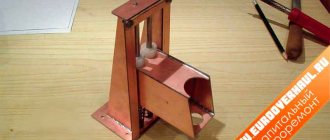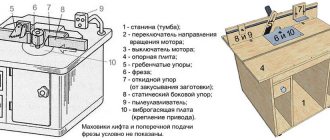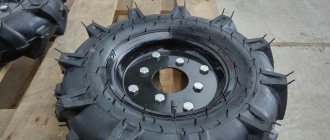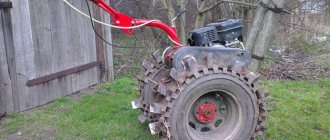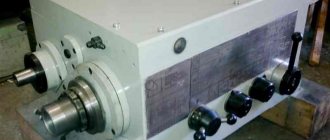What is wheel balancing
If all the other shafts and rotating parts work in a closed volume and they absolutely do not care what happens outside the crankcase, block or housing, then the wheels have a hard time. Even if the tire and disk assembly are perfectly balanced, during operation anything can happen to them, from deformation to the accumulation of dirt. All this affects the balancing of the wheel. What is this, balancing?
Balancing a car wheel is all about eliminating radial mass differences. That is, if the wheel is lighter on one side and heavier on the other, then it will vibrate when rotating. The higher the rotation speed, the greater the vibration.
When balancing is not possible
There are situations when the correct wheel balance, even if all recommendations for the procedure are followed, cannot be established. This can happen for the following reasons:
- A foreign object has entered the wheel. For example, there is a screw or nut between the disk and the tire. In this case, re-flashing the wheel solves the problem.
- Poor quality tire. If the layers of rubber on a tire are not applied evenly, balance will not be achieved. The tire will have to be replaced or the wheel assembly will need to be spot balanced using professional equipment.
- The wheel rim is deformed. Most often, stamped discs have non-ideal geometry. Especially Russian-made ones. The problem is solved by rolling or replacing the disc.
The total weight of weights installed on a new wheel should not exceed 60 grams. If to achieve balance you have to install weights weighing more than 60 grams, it is worth checking the correct assembly of the wheel, the geometry of the disk and the quality of the tire.
An additional check for correct wheel balancing is carried out while driving. If at a speed of 90-100 mph you do not feel tapping, jolts on the steering wheel or vibration, then all actions have been performed correctly. To confirm the results of the work, it is advisable for a beginner to undergo diagnostics at a service station. If the experts determine that the wheels are in balance, you can safely carry out the procedure yourself in the future.
Why and how often to do balancing
Needless to say, constant vibration on the steering wheel even at the lowest speeds is simply unacceptable. Wheel imbalance leads to:
- deterioration of wheel adhesion to the road;
- rapid wear of tires, chassis and car suspension;
- a sharp deterioration in controllability;
- deterioration of the brake system.
Read also: Name the mechanical properties of metals and alloys
Wheels are balanced if necessary, when vibrations occur, as well as after replacing tires, after repairing them and vulcanizing the tubes, after straightening or rolling out steel wheels.
In addition to safety, reduced service life and high fuel consumption, wheel imbalance does not bring much comfort to the car interior. Therefore, balancing wheels with your own hands should become a habitual procedure for every motorist. At least in order to understand how and how this is done.
What happens if balancing is not done in time?
Many drivers think about whether or not to do wheel balancing themselves. There is really no choice. It is necessary to carry out this procedure, otherwise the following consequences are possible:
- accelerated wear of the suspension system;
- destruction of bearings;
- poor tire grip;
- the appearance of an unstable contact spot;
- lengthening the braking distance;
- deterioration in controllability;
- uneven tread wear;
- frequent tire replacement;
- losing a wheel right on the road.
Due to the fact that vibration during driving is transmitted to the driver’s hands, this contributes to rapid fatigue. Therefore, it is necessary to do balancing, especially when there is a long road ahead.
Types of imbalance
And in order to understand the methods of balancing, you need to know the enemy in person, that is, imbalance. Taking into account the simple laws of physics, one can guess that imbalance can be of two types - dynamic and static.
- Static imbalance occurs when the wheel's center of gravity moves away from the axis of rotation. The simplest type of imbalance and do-it-yourself wheel balancing is most often aimed at eliminating static imbalance. The wheel vibrates up/down.
- Dynamic imbalance is the case when it can only be caught when the wheel rotates, and at fairly high speeds, close to operating conditions. This type of imbalance is characterized by a displacement of the center of gravity of the wheel not only beyond the axis of rotation, but also by an uneven displacement of several centers of gravity relative to each other in a perpendicular plane. The wheel wobbles and vibrates. The diagram will explain this more simply.
It turns out that it is not for nothing that every tire shop has stands for wheel balancing, since any vulcanization is, although minimal, a shift in the center of gravity of the entire wheel, which must be balanced. The cost of balancing wheels on a machine is pennies, but if it is not done, the consequences can be the most depressing.
Do-it-yourself balancing stand on the SiLabs C8051F120-TB debugging board
If you are planning to balance something rotating, be it a wheel, an airplane propeller, or a flying saucer. Or you are interested in the story of how a programmer works every day. A fascinating story about the creation of a balancing stand...
Preface. I express my gratitude to my supervisor Ivan Alekseevich Dmitriev, design engineer Andrey Arapov, electronics engineers Alexander Turaev and Gidal Grigorievich. This stand is the result of the work of a close-knit team.
I'll start with a pre-story: I work as a programmer in an organization
It’s not at all secret, but it’s not relevant, I’ll just say that we’re working on UAVs
where many different interesting problems periodically appear, and we have a need to carry out high-precision balancing of an aircraft propeller. As it turned out, equipment for such balancing can be bought, but it will be very expensive, so we decided to do it ourselves.
I’ll tell you a little why this was needed. Our plane, with this propeller, was terribly unstable at idle (800 rpm). Usually such things are balanced, statically and dynamically. Static balancing is balancing relative to the center of rotation, without rotation, and dynamic balancing is balancing during rotation.
As for static balancing, everything is clear here: the screw is simply balanced relative to the center of rotation, but what to do with dynamic balancing, when the screw begins to create vibration when rotating.
It was built for such a task
, consisting of a frame attached with springs to a massive base. An electric motor is installed on a massive base, and through a pulley it rotates an axis on which a balanced screw is mounted. There are also accelerometers installed on the frame, and a hall sensor on the axis with the screw. The electric motor is connected to a frequency converter, which controls its speed. An accelerometer on two axes was used as a deviation meter, connected through an amplifier to the ADC of the SiLabs C8051F120-TB development board. To catch the moment the rotating body passes through 0 degrees, a hall sensor was installed, the signal from which was sent to another leg of the debug board.
So we got a simple unit,
which can measure the acceleration of the frame with the body of rotation, and give a signal about the passage of the shaft rotating the balanced screw through 0 degrees.
/appearance of a simple device/
At first I thought that I could do it in one day, and the task was very simple. But when recording the signal with an oscilloscope, it was discovered that the vibration of the entire installation, interference from the power supply, and other noise turned the recorded signal from the ADC into uniform, incomprehensible noise. Although if you look closely, you can see a clear periodic maximum and minimum. It took about a week, or even a little more, to debug the software and hardware, but then the accuracy of the device began to please the eye.
Characteristics
For each machine, the characteristics will be individual, but their set is all the same. You can consider the most important parameters based on the B-500 AE&T brand equipment.
- One of the important parameters is entering information. In this case it is manual.
- The next important characteristic is the diameter of the disk, which can be checked. For this unit, the diameter is in the range of 10-24.
- The maximum wheel weight is 65 kg.
- Since machines are also used for balancing wheels, their diameter also plays an important role. In this case, the maximum value is 960 mm.
- Another characteristic that is not decisive, but quite important, is the time required to carry out measurements. In this case it is 8 seconds.
- Power consumption is 200 W. In this case, the unit is connected to a regular network of 220 V and 50 Hz.
- The rotation speed of the disc or tire is 200 rpm.
DIY wheel balancing technology
The simplest and most accessible method of static balancing is available to anyone who is able to hang a car on a jack. Moreover, it is recommended to check wheel balancing after each wheel replacement, regardless of whether it has been balanced before or not. And it couldn’t be easier to do this.
- The car is hung on a jack, after which one of the wheels should rotate freely on the hub.
- The wheel spins slightly, if the brake pads are in the way, you need to negotiate with them so that they do not prevent the wheel from rotating completely freely. The same goes for the wheel bearing. Sometimes it becomes necessary to let it go, and after balancing, do not forget to tighten it again.
- The wheel rotates freely in one direction, and the place that will be at the bottom is marked with chalk. The wheel spins in the other direction. The corresponding mark is placed again. And so - several times. If the marks never coincide, the wheel does not need static balancing.
- Otherwise, a weight is installed on the side of the wheel diametrically opposite the mark. The mass of the weight is selected empirically, since the exact weight of the weight cannot be determined by eye. Only a tire balancing stand can do this.
Read also: How to correctly ring a diode bridge of a generator
Congratulations. The static balancing of one of the wheels is completed, now you can begin balancing the rest. Upon completion, sea trials must be carried out. As a rule, an unbalanced wheel begins to vibrate at a speed of about 70-90 km/h.
By the way, the simplest balancing machine can be assembled around an old hub in which the bearing has not yet died. You just have to install the homemade stand perfectly evenly in all planes. Balanced wheels for all and a pleasant driving experience!
Balancing machines detect irregularities on parts during rotation and help eliminate them. Most often, devices with this operating principle are used in tire shops. In addition, these devices have found application in the mechanical engineering industry, where they help balance propellers, turbines and other parts.
Such devices may be equipped with equipment to automatically correct irregularities. In this article we will talk about calibrating a balancing machine with our own hands and describe its structure.
The balancing process on the machine and stand
To do balancing, you need a special machine or stand. Both are equipped with fastening cones. But only the second one, in fully automatic mode, will balance the wheels quickly and reliably.
The wheel begins to spin on the machine. In this case, the lead weights on the rim move. As a result, it is possible to achieve a random location of the center of gravity. But this is a rough balancing act that professionals do not recommend doing.
To make more accurate balancing, you will need to enter the relevant data about the wheel into the information base of the stand. The device itself will determine what the balance should be in different positions.
Attention! After the calculations and tests are completed, the optimal location for the load will be displayed on the stand monitor.
The weights needed for balancing come in many shapes, but almost all are made of lead. It is ideal for this task. Balancers can be either glued or stuffed.
If we talk about adhesive external balancers, their main advantage is that they do not violate the overall aesthetics of the disc,
but on the contrary, they complement it qualitatively.
However, packing balancers also have their advantages. For example, they are better suited for use in winter than adhesive ones. This is due to the fact that at low temperatures the fixing qualities of the adhesive tape deteriorate. Simply put, the adhesive weight can fall off at high speed. Even a strong jet when washed in a car wash can tear them off the main surface.
Attention! Due to unique technical specifications, some rims simply cannot be fitted with padded weights.
Equipment supports
In order to make accurate measurements, the machine must be stable. Depending on the supports of this device, there are two main types:
- The supports can be soft. In this case, the unit is used to test the unbalanced wheel through the amplitude and frequency of movement of these supports. One of the important characteristics for a machine is the accuracy with which it makes these measurements. Therefore, for each element there are separate types of machines with soft supports.
- Rigid supports involve measuring pressure and rotor phase. Such devices are considered universal and can be used for various types of parts. For example, a balancing machine for cardan shafts also has rigid supports.
Structure of the apparatus
The basis of a balancing machine is the supports on which the workpieces and sensors are installed to determine their balance. During testing, the level of imbalance is determined, and based on this information, further actions are taken.
Depending on the type of support, balancing machines are divided into soft and hard. The first measure the parameters of the wheel, taking into account the vibrations of the supports. At the same time, the device is additionally configured for each detail, which allows for fairly accurate testing.
In both the first and second versions of the device, the speed sensor plays a special role. No less important for such a machine is the sensor that measures the rotation angles. Depending on the information input option, balancing devices can be manual or automatic.
Balancing methods
Using the advice of experienced drivers, you can carry out balancing yourself the old fashioned way without using a special machine. This will take more time than a service technician would spend, but it will help save money.
If desired, wheel balancing can be done independently in a garage.
To perform the procedure yourself, you will need the following equipment and materials:
- jack;
- balancing weights;
- chalk or marker;
- a set of keys.
Interesting! To balance wheels on cast or forged wheels, it is advisable to purchase self-adhesive weights. But in winter, such weights can come unstuck due to temperature changes.
Balancing weights are required for balancing
Without removing the wheel
The self-balancing process consists of the following steps:
- Preparatory. The wheels are cleaned of dirt and stones stuck in the tires, the caps are removed, the pressure in the tire is reduced, and old weights are removed. The jack is installed on one side of the vehicle, freeing 2 wheels. Check the free rotation of the wheels. If the wheel is difficult to spin, you need to undo the cotter pin and loosen the hub nut.
- Determination of an easy point. The wheel is turned counterclockwise and waited for it to stop. Mark the top point. Then turn the wheels clockwise and mark the top point again. The midpoint between the two marks is the light point.
- Installation of weights. Using a hammer, weights weighing from 10 to 45 grams are placed on the found point, starting with the light ones. After this, they spin the wheel and wait for it to stop. The weights should be at the bottom. If it turns out wrong, the light weights are removed and heavier ones are added. It is not recommended to use more than 60 grams of weight on one wheel.
- Static balancing. As soon as the weights are at the bottom after stopping, they begin to move them apart in different directions. The wheel begins to rotate and the weights move apart. The goal of the process is to ensure that the wheel stops in a different position each time. Once this starts to happen, the weight is distributed evenly, that is, static balance is achieved.
The procedure is carried out in this sequence with each wheel. To check the correctness of the balancing, you need to drive the car at least ten kilometers at a speed of more than 90 km/h. If you don’t feel any jolts or tapping while moving, it means everything was done correctly. If the procedure is performed incorrectly, specific shocks to the steering wheel appear.
For your own confidence, at the first self-performed balancing, you can undergo diagnostics at a service station. If the specialists confirm that everything was done correctly, in the future you can carry out the procedure yourself.
Important! Self-balancing in the garage is only permissible if there is a static imbalance. Eliminating dynamic imbalance requires the use of equipment. Experts recommend contacting a service center if your car has worn tires and old bent wheels. Without special equipment, it is impossible to balance such wheels yourself.
At a homemade stand
You can make the balancing process easier by making a homemade stand in the garage. In this case, you do not have to remove the brake pads from the wheel and loosen the step nut.
A homemade stand simplifies the process of wheel balancing
The stand is mounted from an old hub with a working bearing. The hub is installed on the frame so that the wheel rotates freely and the entire structure is firmly held on the surface. It is convenient to use vertical metal posts as a frame, between which the wheel is attached. Further balancing actions coincide with the previous method of performing the procedure.
On the machine
Even an experienced motorist in a garage carries out balancing “by eye”. Therefore, there can be no complete confidence in the correctness of the process. In specialized workshops, balancing is performed on computer-controlled machines.
Modern service stations are equipped with CNC balancing machines
The machine consists of a cone-shaped support for mounting a wheel, a rotating electric motor and sensors. The wheel rotates when performing tire mounting, and at the same time the computer detects vibration and pressure. Sensor readings help to accurately calculate the weight and location of weights.
The workshops are equipped with two types of machines:
- Manual - in which the master measures the wheel with a ruler and manually enters the data.
- Automatic - information is read by sensors and displayed on the monitor in digital or graphical form.
Based on the type of supports used, machines are divided into:
- Soft, measuring wheel parameters, taking into account the vibrations of the supports.
- Rigid, measuring pressure and rotor phase.
Interesting! On rigid machines you can test various parts, but the quality and accuracy of measurements is reduced for this reason.
Most modern services are equipped with automatic balancing machines. The master puts the wheel on the shaft, tightens it with bolts and unscrews it. Sensors determine the points of axial runout. The computer determines the intensity of the push and calculates the mass of the load that must be attached to the calculated point. The computer will also inform you if the wheel cannot be balanced.
Balancing with granules
One of the newest methods of wheel balancing is the use of special granules instead of weights. The essence of the technique is to pour special granules into the tire, which slide while driving in the internal space. This free movement eliminates imbalance when driving at speed.
Modern wheel balancing techniques involve the use of microbeads
The advantage of this method is that the granules are poured once, and they perform their intended function throughout the life of the tire. The disadvantage of this balancing method is the high cost of the granules. Therefore, balancing in this way has not gained popularity at present.
Video: DIY wheel balancing
Errors
Balancing machine errors and possible solutions are given below:
- When starting, the device gives an error and does not start the shaft - you need to check the housing latch. If this does not help, clean the dirt from the corresponding internal sensor.
- When turned on, the machine does not start - check the socket and switch. If necessary, replace elements.
- Line malfunction. To check, you need to install the stamped wheel and pull out the measuring device. If discrepancies with the ruler readings are noticeable, calibrate it according to the instructions.
- During operation, the device turns itself off - most likely, a microcrack has appeared in the board. The part needs to be replaced.
Principle of operation
The main task of the balancing machine is to determine the balance of the geometric center of the wheel with its mass. An unbalanced part makes any job difficult and can lead to serious damage. Eliminating imbalance allows you to:
- Increase the service life of bearings.
- Prevent premature wear of tires.
- Increase the service life of suspensions.
There are several options by which you can correct imbalance of wheels or other parts:
- Balancing rings - used in the process of repairing metalworking machines.
- Adjusting screws - special pins are screwed into the unbalanced part, through which it is adjusted.
- Drilling is the most popular balancing option. This is done by creating holes that change the weight of the parts being processed.
Read also: Aluminum grades and their applications
Turning the unit on and off
The balancing machine is equipped with a main switch, which is located at the rear of the equipment. To activate the device, you must enter the program and turn on the system by moving the main toggle switch to the ON position. When performing this operation, do not get close to the rotating elements.
Wait a while for the operating system to load. The first program page will then appear on the display. Several options will be presented on the screen. The remaining functions of the technology in question are controlled by five keys located at the bottom of the monitor.
Balancing machine repair
After prolonged use, individual parts of the device may malfunction. Conventionally, the origin of the breakdown can be divided into mechanical disorders and problems with electrical components. In the latter case, problems with the sensors are detected. Mechanical problems most often occur after falls or strong impacts.
Problems with the machine can be detected by the following signs:
- Normal balancing requires several cycles of operation.
- The parameters of the tested disks are determined incorrectly.
Signs of Imbalance
The conditions described in the previous paragraph of the article relate to planned balancing. But often drivers should carry out the procedure unscheduled if the following signs of imbalance in the wheels are observed:
- uneven tire wear;
- shocks to the steering wheel and its vibration - when the front wheels are unbalanced;
- Vibration of the rear seats - when the rear wheels are unbalanced.
Important! The car owner can eliminate exclusively static imbalance on his own. Dynamic imbalance can be corrected only with professional equipment!
Homemade device
It is possible to make a calibrating machine at home, but only the mechanical part. Electrical equipment and measurement sensors should be purchased ready-made. The device drawings should be selected in accordance with the features of the future use of the machine. The best option for creating a balancing machine is presented in these step-by-step instructions:
- We create a shaft. It should be turned so that at one end there is a ready-made place for mounting bearings, and at the other there is a thread for installing a washer.
- We install bearings. It is best to use those that have already been used, but have not yet used up the main resource. Such parts will create minimal resistance.
- We form the apparatus stand. For these purposes, it is best to use a pipe with a diameter of 5.2 centimeters. At the upper end of the support we mount it from above and from the side.
- For convenient placement of the part, we recommend creating a support platform.
Video: DIY wheel balancing machine.
How parameters are measured
Next, you should pay attention to how the balancing machine evaluates the wheel by measuring its parameters. To do this, the object is conditionally divided into two planes - horizontal and vertical. Thanks to this, the tire is also conditionally divided into 4 equal parts.
The accuracy of mounting the wheel on the shaft of the balancing machine plays a decisive role in determining its parameters. Ideally, all 4 parts should be equal to each other. If you violate the perpendicularity of the installation of the wheel on the shaft, then its division into parts will also be disrupted, which means that the data collection will initially occur with an error.
Errors during the procedure
If the balancing process is carried out in violation of the technology, then the vibration problem, at best, will not be solved, and at worst, it will further worsen. The most common mistakes:
- Balancing when there is dirt on the wheel. Even pebbles stuck in the tread can be disrupted by additional imbalance. The overall picture, even with precise equipment, will be disrupted, and it will not be possible to bring the wheel to zero.
- Balancing a wheel with a broken tire or wheel geometry. If the disc has even minor dents or distortions, it must first be rolled on a special machine. Straightening the disc with a hammer or other impact instruments is unacceptable.
- Incorrect torque of the hub bolt on the balancing machine. Excessive force will lead to the wheel being misaligned and the balancing will be incorrect.
- Violation of technology for installing a tire on a disk. Often, even experienced installers perform work in violation of technology. As a result, the wheel is given additional inertia.
- Misalignment during installation of the wheel on the vehicle axle. This problem occurs due to incorrect tightening of the bolts. Even if a properly balanced wheel is installed skewed, it will vibrate.
In order to avoid such troubles, you need to carefully choose a car service and supervise the work of the technicians. Qualified specialists guarantee their work and show the balancing results on the machine display. If the master prohibits the presence of the car owner during work or does not provide a guarantee, it is advisable to refuse his services.
Wheel balancing is an important element of monitoring the technical condition of a vehicle. A timely procedure will help not only improve safety and driving comfort, but also extend the life of the vehicle by preventing premature wear of chassis parts.
- Author: Andrey
Rate this article:
- 5
- 4
- 3
- 2
- 1
(11 votes, average: 4.8 out of 5)
Share with your friends!
Home →
With your own hands →
Nuances of operation
To start working with the machine, you need to fix the disk. This can be done using a nut and a cone. After checking the reliability of the fastening, you can begin measuring procedures. The disk is spun up, and then its performance is compared with the reference ones. Deviations should be in the range of 2 and 1.5 g. The first indicator is horizontal, the second is radial.
After the initial testing, all weights should be removed and repeated measurements should be taken. The disc under test stops at the heaviest point downwards. Be sure to take this information into account when measuring disk parameters. After this, the wheel must be twisted 90 degrees and a load is hung on the opposite side. If the wheel stops rotating when turned 45 degrees, it means that the do-it-yourself calibration was done successfully.
How to do balancing correctly
It all starts with cleaning the wheel from dirt. Even stones in the tire tread need to be removed. Only after this can balancing be done. If there are old balancing weights on the rims, then you need to get rid of them, otherwise the whole point of the work will be lost.
Once the wheel is secured, several tests need to be done. The main thing will be to measure the tire runout. Moreover, this must be done in both directions: lateral and radial. This will be needed for a control comparison.
Balancing is more than just securing a weight to the rim. For example, in order to achieve a positive result, you need to correctly fit the tire onto the rim. This requires a special solution or lubricant. If this is not done, then distortion is quite possible. Naturally, in such conditions, precise tuning is impossible.
If you want to do the setup yourself without any difficulty and with maximum accuracy, then you will need a high-quality stand. Devices with 3D modeling capabilities perform best. The laser is responsible for the accuracy of measurements. It allows you to calculate the disk parameters and, based on them, carry out the most accurate settings.
Attention! On a device with a 3D function, the wheel runout is measured on three axes.
Detailed description of parameters
You should start by manually entering parameters. This is very important, as it increases preparation time and also requires special training for the operator. Automatic devices do not have this disadvantage. As for the diameter of the disk, this does not mean the diameter of the wheel in general. The 10-24 range allows you to balance rims on cars, SUVs and small trucks.
Next, it is worth noting the maximum weight. This characteristic often goes unnoticed, and many people believe that weight is not regulated. However, installing an object with a weight exceeding the maximum usually leads to a rapid decrease in the life of the unit, which will lead to its rapid failure. As for the measurement time, as mentioned, the parameter is not too important. But it’s still worth paying attention to, for example, if there is a lot of workload. That is, for large-scale workshops this is an important characteristic.
(1 rating, average 5 out of 5)
